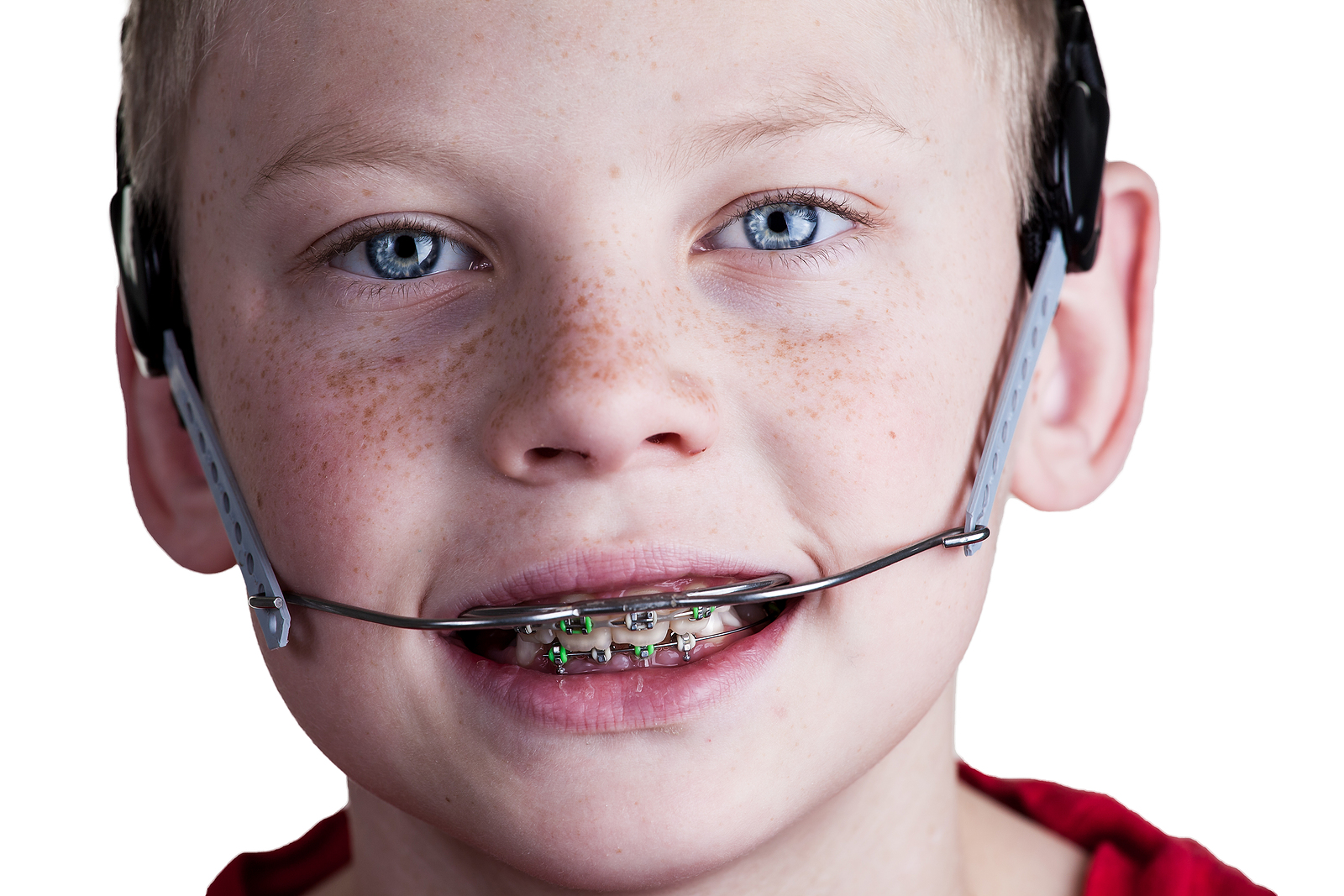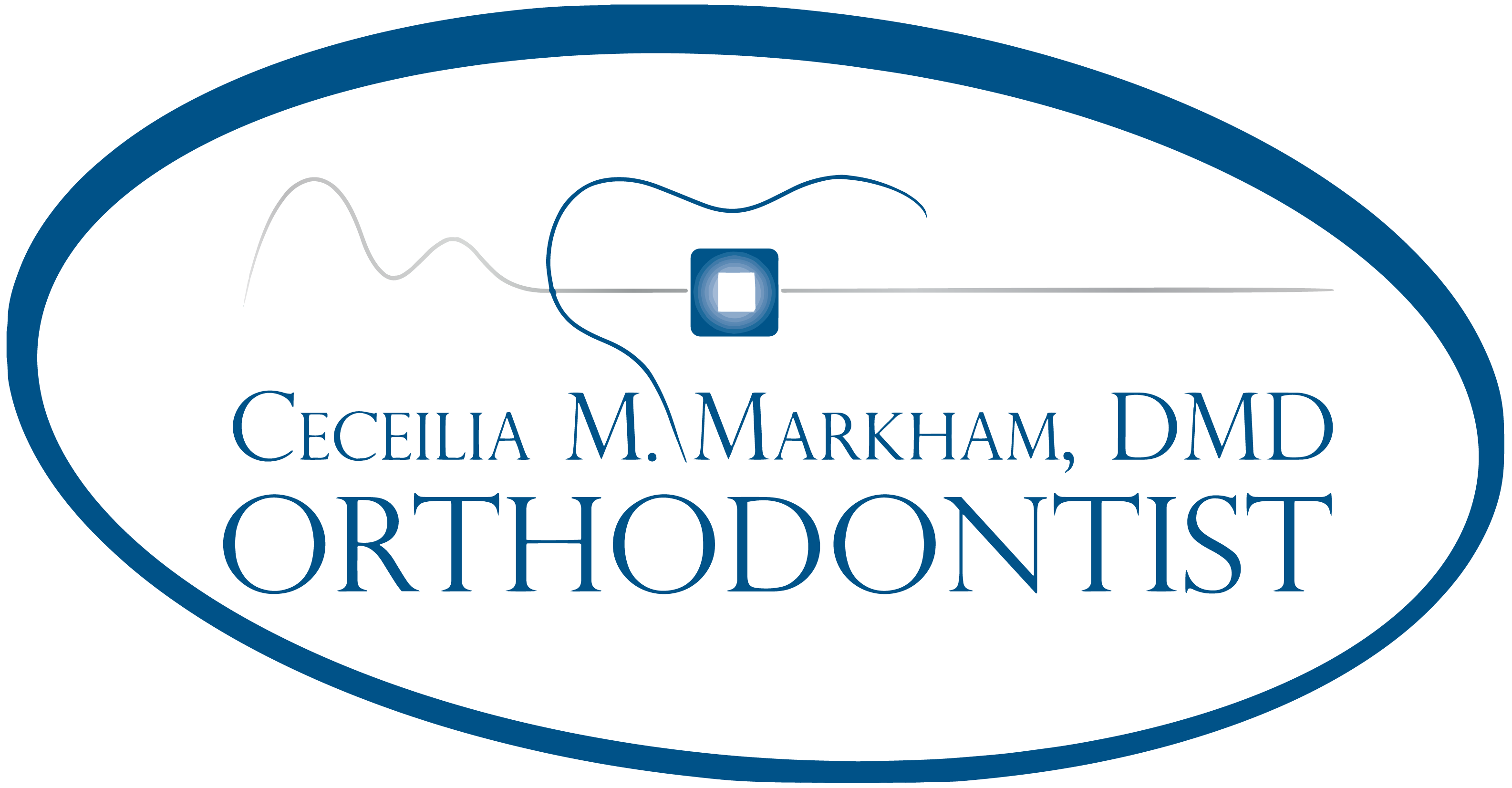Orthodontic treatment involves various appliances and techniques designed to correct teeth and jaw misalignment. One of the most effective and commonly used tools in orthodontics is headgear. Although headgear is often associated with traditional braces, it plays a pivotal role in correcting bite issues and guiding jaw growth, especially in younger patients. As part of the comprehensive orthodontic treatment provided by Dr. Ceceilia M. Markham, DMD, in Warrington, PA, headgear serves as a non-invasive, highly efficient solution for a variety of orthodontic problems.
Headgear is particularly useful for correcting bite discrepancies, such as overbites and underbites, and for controlling the growth of the upper and lower jaw. This article will delve into the different types of headgear, how they work, the benefits they offer, and their care requirements, providing an in-depth look at why this appliance is crucial for orthodontic success.

What is Headgear?
Headgear is an orthodontic appliance designed to help guide the growth of the upper or lower jaw and correct bite issues. The device consists of two main components: an external metal frame that wraps around the back of the head or neck and a set of elastic straps or wires that attach to the braces or other orthodontic appliances inside the mouth. The headgear works by applying gentle, continuous pressure to the teeth and jaw to move them into the desired position over time.
While headgear is often worn at home or during the evening and night, its use is essential for ensuring that the teeth and jaws develop properly, particularly in growing children or adolescents. It is most commonly recommended when patients have significant alignment issues, such as severe overbites or underbites, or when there is a need to control the development of the jaw before the eruption of permanent teeth.
Types of Headgear
There are several different types of headgear, each tailored to address specific orthodontic issues. Below are the most commonly used types of headgear:
Cervical Pull Headgear
The cervical pull headgear is one of the most common types used in orthodontics. It consists of a neck strap that is connected to the back of the head and is typically used to correct overbites, where the upper teeth protrude over the lower teeth. The cervical pull headgear works by applying force to the upper jaw, slowing down its growth and encouraging proper alignment of the teeth.
The cervical pull headgear is ideal for patients who have a prominent upper jaw that needs to be brought back into alignment with the lower jaw. This appliance is usually worn for several hours each day, including during sleep, and is typically used in combination with other orthodontic treatments such as braces.
High Pull Headgear
The high pull headgear is similar to the cervical pull headgear but uses a different strap configuration. Instead of connecting to the neck, the high pull headgear attaches to the top of the head. It is primarily used to correct overbites and to control the growth of the upper jaw by pulling the upper molars backward. The high pull headgear is also used when there is a need to correct the alignment of the upper teeth and improve the bite.
This type of headgear is typically worn for a prescribed amount of time each day, often during the evening and night. The high pull headgear is particularly effective in growing children whose upper jaw is still developing and can be modified as needed based on the patient's specific needs.
Reverse Pull Headgear (Facemask)
Reverse pull headgear, often called a facemask, is used to correct underbites, where the lower teeth protrude in front of the upper teeth. The reverse pull headgear works by applying force to the upper jaw, pushing it forward to bring the teeth and jaw into alignment. The device consists of a mask that covers the front of the face, with straps that are attached to the braces or other orthodontic appliances in the mouth.
This appliance is especially effective for patients with a developing or retrusive upper jaw, often used in children whose jaw development is still ongoing. The reverse pull headgear is worn for a specified amount of time each day, usually during the evening and night. The treatment duration may vary depending on the severity of the condition being corrected.
Combination Headgear
Combination headgear refers to an appliance that combines the features of both high pull and cervical pull headgear. This type of headgear is used when both the upper jaw and the lower jaw need to be adjusted simultaneously. The combination headgear applies forces in multiple directions to encourage balanced jaw growth and alignment. This appliance is custom-fitted to each patient’s specific needs and is worn for a set amount of time each day.
Combination headgear is typically recommended for patients with complex orthodontic issues that require a more comprehensive approach. It is especially useful when multiple jaw and bite issues need to be addressed concurrently.
How Headgear Works
Headgear works by applying a constant, gentle force to the teeth and jaws to guide their growth and alignment. The appliance helps correct bite issues such as overbites, underbites, and crossbites by controlling the development of the upper and lower jaws. By applying pressure to the back teeth, headgear can help reposition the upper molars or bring them into better alignment with the lower jaw.
For patients with overbites, the cervical or high pull headgear can slow down the growth of the upper jaw, which helps bring the teeth into a more aligned position. In contrast, for patients with underbites, the reverse pull headgear encourages forward movement of the upper jaw to bring it into alignment with the lower jaw.
The key to successful treatment with headgear is consistent wear. The appliance must be worn as prescribed by the orthodontist, typically for several hours each day or while sleeping, to ensure effective results. Over time, the gentle pressure applied by the headgear will gradually move the teeth and jaw into their desired positions.
Benefits of Headgear
- Improved Bite and Jaw Alignment: One of the main benefits of using headgear is the correction of bite issues. Whether the patient is dealing with an overbite, underbite, or other malocclusion, headgear helps reposition the upper and lower jaws for optimal alignment, improving both function and appearance.
- Prevention of Further Dental Problems: By correcting bite issues early on, headgear can help prevent more severe dental problems in the future. Misaligned teeth and jaws can lead to difficulties with chewing, speaking, and even breathing. Early intervention with headgear can help avoid these complications and ensure proper oral health.
- Non-Surgical Treatment: Headgear provides an effective, non-surgical alternative to correcting severe orthodontic problems. In cases where surgery might otherwise be needed to address jaw issues, headgear can provide a non-invasive solution that promotes natural jaw development.
- Optimized Facial Growth: Headgear can be particularly effective in growing children and adolescents, where the appliance can guide the growth of the jaw to achieve a more balanced facial appearance. By controlling the growth of the upper and lower jaws, headgear helps create facial symmetry and an aesthetically pleasing smile.
- Shortened Treatment Time: When used as part of a comprehensive orthodontic plan, headgear can reduce the overall length of treatment. By addressing growth issues early on, headgear can prevent the need for more complex procedures later, leading to faster results.
Considerations and Limitations
While headgear is highly effective, it does require a commitment from the patient to ensure optimal results. Some of the considerations and limitations include:
- Compliance: The most important factor in the success of headgear treatment is patient compliance. The appliance must be worn as directed, usually for several hours each day or during sleep, to achieve the desired results. Failure to wear the headgear as prescribed can delay treatment or reduce its effectiveness.
- Discomfort: Some patients may experience mild discomfort or soreness when first wearing headgear, particularly if the appliance is not adjusted correctly. This discomfort usually subsides after a few days.
- Oral Hygiene: It is important to maintain proper oral hygiene when wearing headgear. Patients should brush and floss regularly to ensure that food particles do not accumulate around the appliance, which can lead to plaque buildup or tooth decay.
Maintenance and Care of Headgear
Headgear requires minimal maintenance but should be cared for properly to ensure its longevity and effectiveness. Here are some tips for maintaining headgear:
- Keep the appliance clean: Regularly clean the headgear according to the orthodontist’s instructions to prevent buildup of bacteria or plaque.
- Store it properly: When not in use, store the headgear in a safe, clean place to avoid damage or loss.
- Follow up with the orthodontist: Regular visits to the orthodontist ensure that the headgear is functioning correctly and may allow for adjustments as necessary.
Conclusion
Headgear remains one of the most effective and reliable tools in orthodontics for correcting bite issues and guiding the growth of the jaw. Whether correcting overbites, underbites, or jaw misalignment, headgear is a non-invasive solution that can improve oral function, enhance facial symmetry, and reduce the need for more invasive procedures.
At Dr. Ceceilia M. Markham’s orthodontic practice in Warrington, PA, headgear is part of a comprehensive approach to orthodontic care that focuses on creating beautiful, functional smiles. If you or your child are in need of orthodontic treatment to correct bite or jaw alignment issues, Dr. Markham’s team will work with you to determine if headgear is the right solution for your needs and help you achieve a healthy, well-aligned smile.
Visit Our Office
Office Hours
- MON9:45 am - 5:30 pm
- TUE9:00 am - 5:00 pm
- WED9:45 am - 6:15 pm
- THUBy appointments only
- FRI9:45 am - 5:00 pm
- SAT8:45 am - 1:00 pm
- SUNClosed
